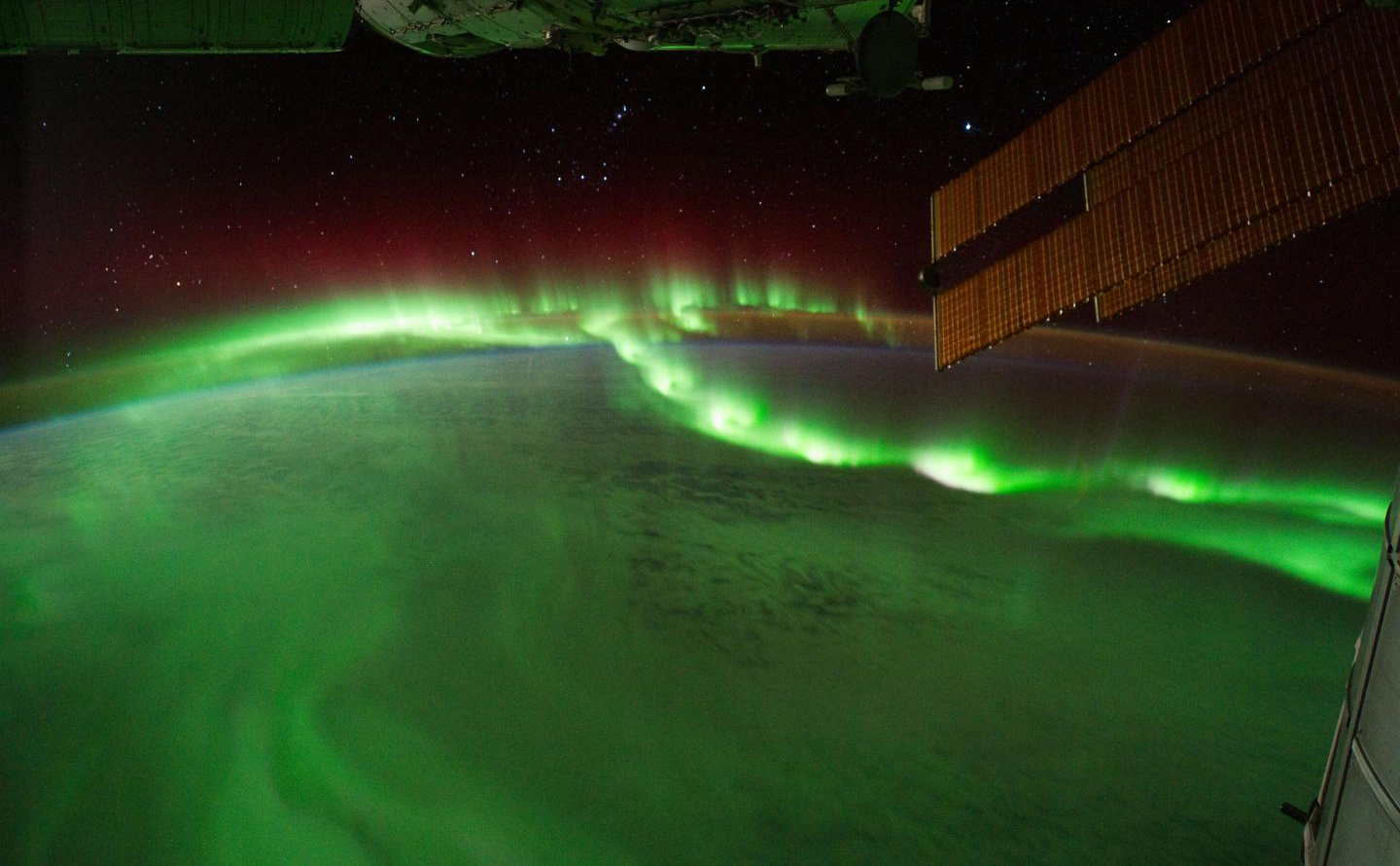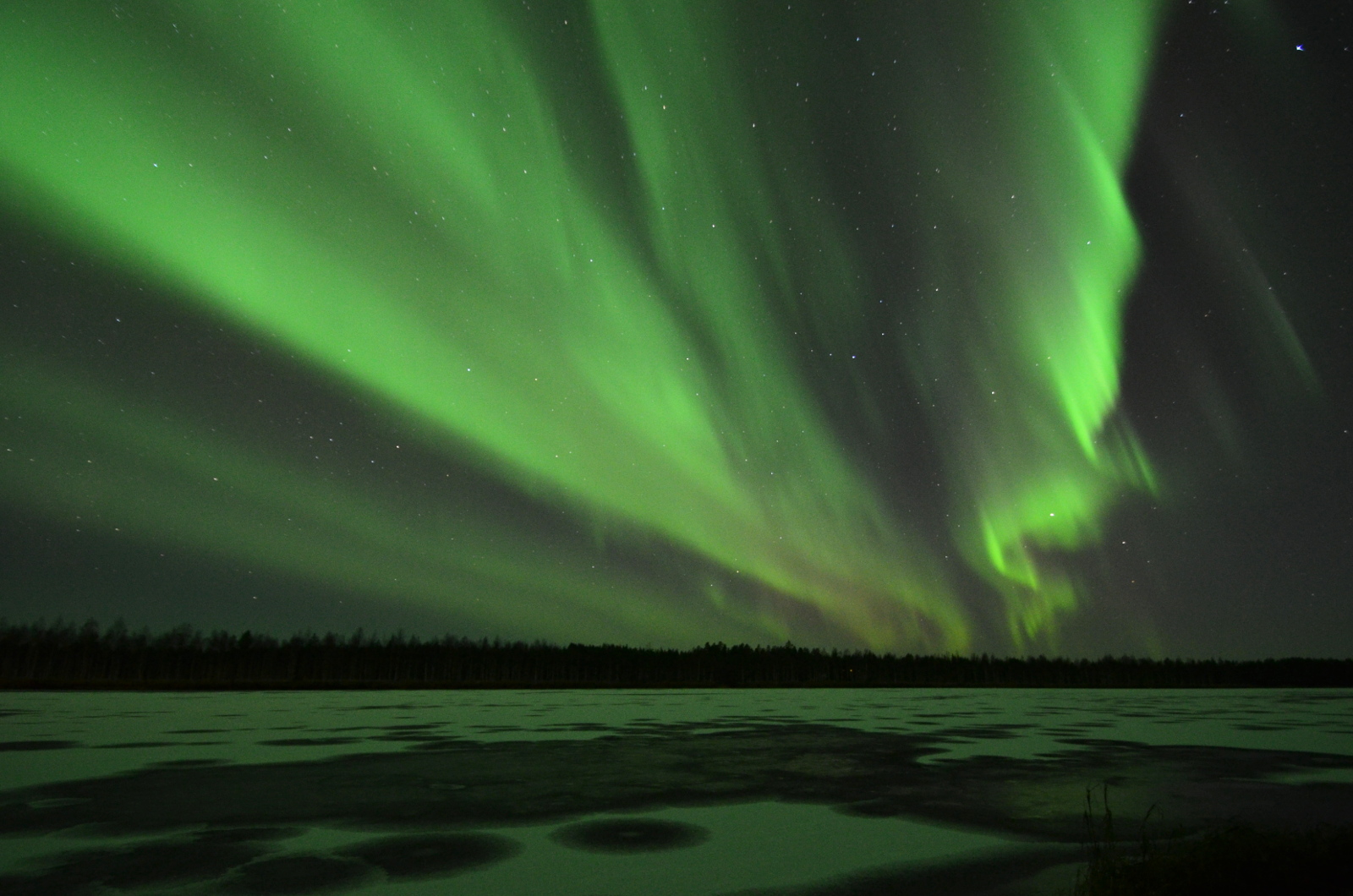
A University of Southampton study has revealed an intriguing new clue in the mystery of what triggers periods of very intense, brightly coloured activity during displays of both the southern and northern lights.
Known as 'a magnetospheric substorm', this awe-inspiring phenomena, which blankets the-night-sky in green and purple, is almost always preceded by what space scientists call 'auroral beads' - a necklace-like wave of multiple luminous points of light which eventually evolve into the storm.
Southampton scientists have now shown there is a link between these auroral beads and the intensity of low frequency radio waves above the aurora in the Earth's magnetosphere - a vast area around our planet which is dominated by its magnetic field.
Their findings are published in the journal Nature Communications .
"The aurora borealis and aurora australis are caused by charged particles from space colliding with atoms and molecules in our atmosphere," explains physicist Dr Daniel Whiter of the University of Southampton. "Particles ejected from the Sun flow out through the solar system carrying the Sun's magnetic field with them, and this 'solar wind' is the source of energy for the aurora.
"Auroral substorms are caused by the accumulation and then release of magnetic energy stored in Earth's magnetosphere during its interaction with the solar wind flow. However, what exactly triggers this energy to suddenly unload in spectacular fashion isn't fully understood."

An international team of researchers, led by Southampton physicists, examined data gathered from ground based observatories, imaging satellites and radio antennae onboard spacecraft, including NASA's 'Polar' spacecraft, the Japanese 'Arase' spacecraft, and cameras stationed in Lapland operated by the Finnish Meteorological Institute.
In particular the team concentrated on examining auroral kilometric radiation (AKR) - naturally occurring radio emissions produced in near-Earth space directly above the aurora.
The scientists found that prior to a substorm occurring there is a distinct signal in AKR activity almost exactly as the auroral beads become visible. This burst of radio wave emissions suddenly increases in strength at the onset of the substorm.
Investigated for the first time, this distinct radio signal gives important clues about the physical processes operating before and during substorm onset, producing signatures both in visible aurora and invisible radio emissions.
Lead author of the study, post-doctoral researcher Dr Siyuan Wu of the University of Southampton comments: "The fine, frequency-drifting structures seen in AKR provide direct evidence of the formation of small-scale electric potential structures along magnetic field lines connected to the auroral beads. Their periodicity and propagation speed show remarkable consistency across multiple datasets.
"Together, these results provide new evidence in the generation of auroral beads and the substorm triggering process."
The scientists believe this could be a universal mechanism manifesting itself in not just the northern and southern lights of Earth, but also in the magnetosphere of certain other planets in our solar system, such as Saturn and Jupiter. They hope their research can now be built on to fully understand what triggers auroral substorms.






